
Ecuador, officially the Republic of Ecuador, is a country in northwestern South America, bordered by Colombia on the north, Peru on the east and south, and the Pacific Ocean on the west. Ecuador also includes the Galápagos Islands in the Pacific, about 1,000 kilometres (621 mi) west of the mainland. The capital is Quito.

Ecuador is a country in western South America, bordering the Pacific Ocean at the Equator, for which the country is named. Ecuador encompasses a wide range of natural formations and climates, from the desert-like southern coast to the snowcapped peaks of the Andes mountain range to the plains of the Amazon Basin. Cotopaxi in Ecuador is one of the world's highest active volcanos. It also has a large series of rivers that follow the southern border and spill into the northwest area of Peru.
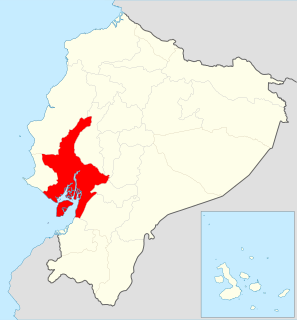
Guayas is a coastal province in Ecuador. It is bordered to the west by Manabí, Santa Elena, and the Pacific Ocean ; to the east by Los Ríos, Bolívar, Chimborazo, Cañar, and Azuay; to the north by Los Ríos and Bolívar; and to the south by El Oro and the Pacific Ocean.

El Oro is the southernmost of Ecuador's coastal provinces. It was named for its historically important gold production. Today it is one of the world's major exporters of bananas. The capital is Machala.

Tumbes is a coastal region in northwestern Peru and southwestern Ecuador. Due to the region's location near the Equator it has a warm climate, with beaches that are considered among the finest in Peru. Despite its small area, the region contains a wide variety of ecosystems.

Contralmirante Villar is a province of the Tumbes Region in Peru. Its capital is the town of Zorritos.
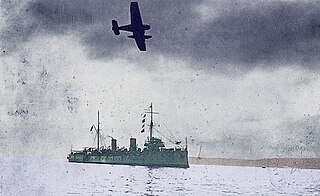
The Ecuadorian–Peruvian War, known locally as the War of '41, was a South American border war fought between 5–31 July 1941. It was the first of three military conflicts between Ecuador and Peru during the 20th century. During the war, Peru occupied the western Ecuadorian province of El Oro and parts of the Andean province of Loja.
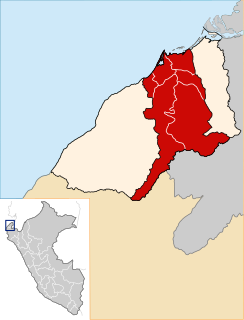
Tumbes is a province in Peru, located in the region of the same name. It borders the Pacific Ocean on the north, the Zarumilla Province on the east, the Piura Region and Ecuador on the south and the Contralmirante Villar Province on the west. Its capital is Tumbes, which is also the regional capital.

Aguas Verdes, is a town in the Zarumilla Province of the Tumbes Region in northwestern Peru. It has a population of 2,390 (1999) and is capital of the Aguas Verdes District.

Zarumilla is a town in the Tumbes Region, in northwestern Peru. It has a population of 17,587 (1999) and is the capital of the Zarumilla Province. It is also the main settlement in the Zarumilla District.

The Zarumilla River is a river in South America that marks the border between Peru and Ecuador. It is named after the Peruvian town of Zarumilla.
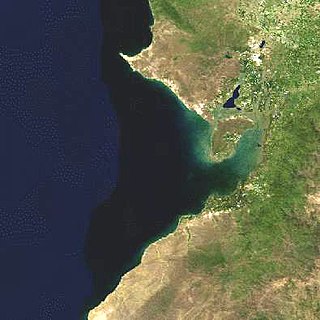
The Gulf of Guayaquil is a large body of water of the Pacific Ocean in western South America. Its northern limit is the city of Santa Elena, in Ecuador, and its southern limit is Cabo Blanco, in Peru.

The Tumbes River, is a river in South America.

Huaquillas is a town in western El Oro, a province of SW Ecuador. It is the canton seat of the Huaquillas Canton.

The territorial dispute between Ecuador and Peru was the source of a long period of intermittent armed conflict between the two countries. This dispute was a consequence of each country's interpretation of what Real Cedulas Spain used to precisely define its colonial territories in the Americas. After independence, all of Spain's colonial territories signed and agreed to proclaim their limits in the basis of the principle uti possidetis juris which accepts the Spanish colonial borders of 1810 as the borders of the new republics. Thus the borders of Gran Colombia which included Ecuador, Colombia and Venezuela would follow the borders of the Viceroyalty of New Granada, and Peru the Viceroyalty of Peru in 1810. However, Peru was not satisfied with this and tried to set the date of her Uti Possitedis to 1824 – a time when Peru was officially independent with territories Peru militarily occupied since 1820.
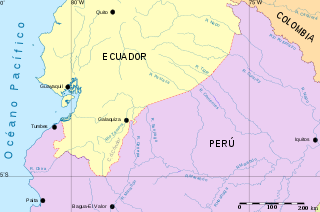
The Paquisha War or Fake Paquisha War was a military clash that took place between January and February 1981 between Ecuador and Peru over the control of three watchposts. While Peru felt that the matter was already decided in the Ecuadorian–Peruvian War of 1941, Ecuador did not agree with the Rio de Janeiro Protocol. Later in 1998 the Guarantors of the Rio Protocol ruled that the border of the undelimited zone was indeed the line of the Cordillera del Cóndor, as Peru had been claiming since the 1940s.

Aguas Verdes is a district in the Zarumilla Province of the Tumbes Region in northwestern Peru. Its capital is the town of Aguas Verdes, which is on the banks of the Zarumilla River. Located on the border with Ecuador, Aguas Verdes serves as the largest international point of entry in Peru's northern border. This district is located right across the river from the Ecuadorian town of Huaquillas.

The Sechura Province is the largest of eight provinces of the Piura Region in Peru.

Tumbes is a district in the middle Tumbes Province in Peru. It is bordered by Corrales District on the west, Pacific Ocean on the north, Zarumilla Province on the east, and San Juan de la Virgen District on the south.

The Tumbes-Piura dry forests (NT0232) is an arid tropical ecoregion along the Pacific coasts of southern Ecuador and northern Peru. The ecoregion contains many endemic species of flora and birds adapted to the short wet season followed by a long dry season. Threats include extraction of wood for fuel or furniture, and capture of wild birds for sale.




















